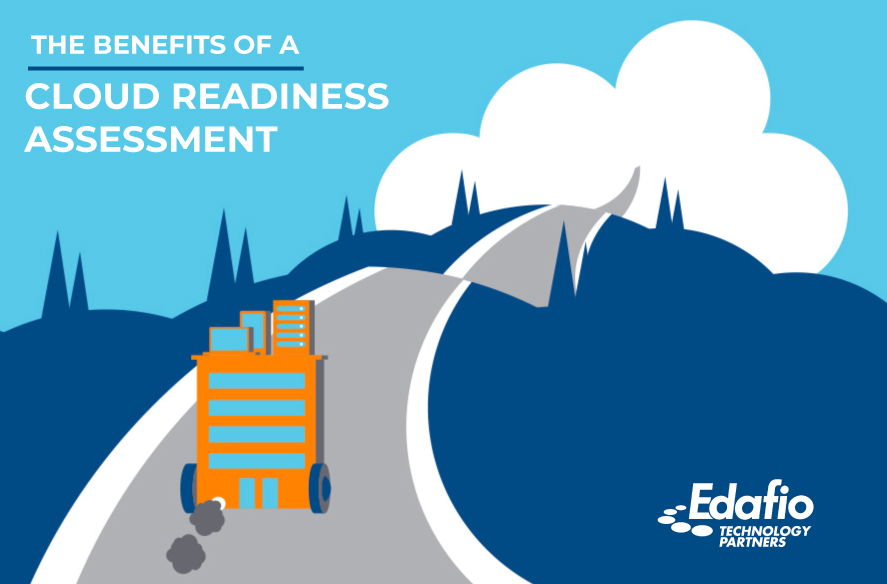Cloud deployment has become an underpinning element of almost all businesses. Today, more than ever, cloud technology is providing immense opportunities for business growth, especially in areas like data storage, application optimization, virtualization, data backup, and disaster recovery.
However, migrating to the cloud is a systematic and structured process often supported by expertise from trusted service providers. When migrating to the cloud, you should ensure proper planning to minimize business disruption and ensure business continuity during – and after migration!
All systems, networks, and data must be assessed and evaluated beforehand to minimize the chances of business disruption during migration. This is precisely what cloud readiness assessment is all about.
Cloud readiness assessment
Cloud readiness assessment ensures that your critical business infrastructure – computers, networks, systems, and data – is highly secured and flexible to support a seamless cloud migration.
Surprisingly, organizations embracing cloud migration or those migrating to the cloud don’t realize pre-migration planning is as critical as implementation. Cloud readiness assessment provides a solid foundation before moving forward with cloud deployment.
Enterprises in Arkansas are coming to terms with cloud deployment and the implications on business process development. Heavy cloud deployments continue to underlie the operating infrastructure of most Arkansas businesses, meaning that most enterprises utilize the cloud.
However, despite the importance of cloud deployments in creating agile and dynamic workflows, the importance of readiness assessment is overlooked if not ignored. Business leaders ignore the significance of conducting a readiness assessment before migrating to the cloud.
Let’s look at how every Arkansas business can benefit from cloud readiness assessment:
Ways Arkansas businesses can benefit from the cloud-ready assessment:
Understanding your IT infrastructure
There’s a popular saying that you cannot improve what you cannot measure. Similarly, you cannot manage or evaluate what you can’t properly quantify. The same principle applies to cloud migration. You cannot successfully deploy your cloud without a solid grasp of your IT infrastructure.
You gain a solid understanding of your IT assets and inventory by conducting a cloud readiness assessment. The assessment provides a comprehensive knowledge of your computing resources – computers, laptops, networks, and data. This understanding allows you to make informed migration decisions.
For instance, you may decide to add computers and monitors to your new cloud environment. However, you cannot do this without knowing that you lack adequate computing resources to meet your post-deployment tasks. So, a cloud-ready assessment helps you understand your infrastructure.
Budget estimation
After understanding your current IT infrastructure, you can now proceed to budget for the migration. A cloud-ready assessment helps you estimate the budget for the migration.
Essentially, the budgets involved in the cloud migration include the cost of the team, infrastructure costs, data transfer costs, and data provider costs. In addition, you might be required to pay for post-migration expenses, including maintenance and development costs.
So, having a cloud-ready assessment helps you accurately estimate seen and unseen costs. You gain an end-to-end view of the entire transactions that will be incurred to migrate your infrastructure to the cloud.
Productivity and scalability
Every Arkansas business can benefit from cloud migration. Cloud migration cuts down on data storage and data processing costs because every data and information can be accessed remotely or from a central database. In addition, organizations cut operational costs when they deploy the cloud. They can monitor operations remotely by examining metrics and looking at intuitive dashboards.
So, conducting a cloud readiness assessment helps you to know what tools and resources you’ll deploy in your cloud computing environment to get the best out of your team. Some of these resources include tracking and monitoring devices and visibility metrics. Conducting a cloud readiness assessment is part and parcel of boosting your productivity and scalability.
Predicting disruptions
By conducting a cloud readiness assessment, Arkansas businesses can accurately predict unforeseen disruptions and account for them effectively. For instance, if you’re running a hiring and HR consultancy firm, you can inform your clients beforehand that systems will stall for specific days.
So, a cloud readiness assessment gives businesses time to account for downtimes. This evaluation provides organizations with end-to-end visibility of unforeseen service disruptions and preventive and rehabilitative measures they can take for successful cloud migration.
Change management planning
Conducting a cloud readiness assessment helps with change management planning. Organizations use assessment information and knowledge to build and reinforce a change management strategy that befits the organization’s unique abilities and the change itself.
So, conducting a cloud readiness assessment helps organizations gain the knowledge and information required to build a change management strategy. This strategy successfully propels business even when cloud deployment or migration occurs.
Addressing changes with employees
Cloud readiness assessment helps organizations address issues with their workforce beforehand. The readiness assessment allows employers to manage and critically evaluate the details of the change with employees. It helps business leaders interact with their employees and know whether they’re ready for change. The assessment identifies the specific resources, training, and capacities required to make the workforce part of the change successfully.
Cloud readiness planning helps identify whether employees are ready for cloud migration. It helps identify any underlying issues or challenges the workforce may have when migrating your systems and infrastructure to the cloud. Most importantly, readiness assessment enables you to identify the resources and training required to use and optimize the cloud successfully.
Cloud Migration is Not a ‘Lift-and-Shift’ Process
Cloud deployment or cloud migration is not a copy-and-paste process. It requires careful planning and strategic implementation.
Requirements for successful cloud migration:
- Reasons. First and foremost, a cloud migration requires definite reasons for migrating. The justification for the migration must be supported by concrete evidence and business objectives.
- Buy-in. Secondly, a cloud migration requires a ‘buy-in’ from all organization members. There will be training and some inconveniences offered to the workforce. So, your employees must fully agree to this migration.
- Workload. Cloud migration requires migrating a considerable workload for it to succeed. The IT department is usually busy. Cloud deployers and organizations will undertake a heavy workload for cloud migration to succeed.
- Testing and re-testing. There’s a need to constantly test and evaluate your systems and applications before and during migration. After migration, assess your applications to ensure full operation and performance post-migration.
You can contact Edafio Technology Partners for a cloud readiness assessment.








